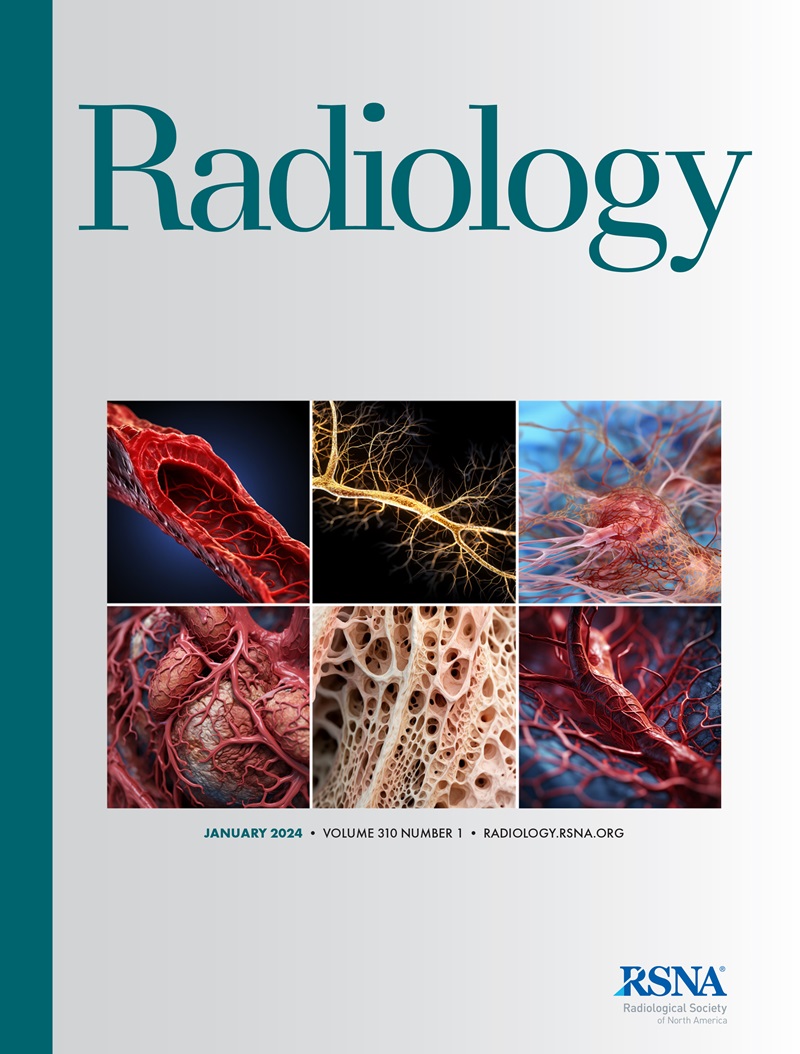Niklas Lützen, Jürgen Beck, Lalani Carlton Jones, Christian Fung, Theo Demerath, Alexander Rau, Charlotte Zander, Katharina Wolf, Florian Volz, Amir El Rahal, Horst Urbach
求助PDF
{"title":"MRI and Surgical Findings Refine Concepts of Type 2 Cerebrospinal Fluid Leaks in Spontaneous Intracranial Hypotension.","authors":"Niklas Lützen, Jürgen Beck, Lalani Carlton Jones, Christian Fung, Theo Demerath, Alexander Rau, Charlotte Zander, Katharina Wolf, Florian Volz, Amir El Rahal, Horst Urbach","doi":"10.1148/radiol.241653","DOIUrl":null,"url":null,"abstract":"<p><p>Background Type 2 lateral spinal cerebrospinal fluid (CSF) leakage occurs in approximately 20% of cases of spontaneous intracranial hypotension (SIH); however, the underlying pathologic mechanism remains ambiguous. Purpose To characterize MRI features of type 2 leaks, correlate them with intraoperative observations, and evaluate their diagnostic value. Materials and Methods Patients with SIH and type 2 leaks diagnosed between January 2021 and February 2023 were retrospectively identified. Characteristic imaging features from heavily T2-weighted MR myelography (T2-MRM) images were reevaluated (independently and blinded) in the type 2 leak sample mixed with a sample of 40 patients with SIH and type 1 (ventral) leaks. Available intraoperative data were reviewed for lateral dural tears, arachnoid outpouching, and ruptured spinal meningeal diverticula. Results Twenty-eight patients with SIH (mean age, 37.3 years ± 8.2 [SD]; 22 [79%] female patients) had 29 type 2 leaks between the T7 and L2 levels without side predominance. Characteristic cystic lesions with a broad dural base on the exiting nerve root sleeve were identified at T2-MRM; this \"bud-on-branch\" sign reflects an arachnoid outpouching herniating through a lateral dural tear, distinct from a meningeal diverticulum, which yielded a sensitivity of 79% (22 of 28; 95% CI: 59, 92) and a specificity of 100% (40 of 40; 95% CI: 91, 100) for leak location. Arachnoid outpouching was confirmed intraoperatively in 23 of 25 patients (92%; 95% CI: 81, 100), originating from the nerve root sleeve axilla in most patients (19 of 25, 76%; 95% CI: 59, 93); two of 25 patients (8%; 95% CI: 0, 19) had a dural tear only, and none had an underlying ruptured meningeal diverticulum. Conclusion This study showed that type 2 leaks are actually due to a lateral dural nerve root sleeve tear through which the arachnoid herniates, which contrasted the common perception that these leaks result from ruptured meningeal diverticula. These leaks had a characteristic anatomic distribution and MRI appearance with substantially facilitated leak localization in patients with SIH. © RSNA, 2025 <i>Supplemental material is available for this article.</i> See also the editorial by Rovira and Torres-Ferrús in this issue.</p>","PeriodicalId":20896,"journal":{"name":"Radiology","volume":"314 2","pages":"e241653"},"PeriodicalIF":12.1000,"publicationDate":"2025-02-01","publicationTypes":"Journal Article","fieldsOfStudy":null,"isOpenAccess":false,"openAccessPdf":"","citationCount":"0","resultStr":null,"platform":"Semanticscholar","paperid":null,"PeriodicalName":"Radiology","FirstCategoryId":"3","ListUrlMain":"https://doi.org/10.1148/radiol.241653","RegionNum":1,"RegionCategory":"医学","ArticlePicture":[],"TitleCN":null,"AbstractTextCN":null,"PMCID":null,"EPubDate":"","PubModel":"","JCR":"Q1","JCRName":"RADIOLOGY, NUCLEAR MEDICINE & MEDICAL IMAGING","Score":null,"Total":0}
引用次数: 0
引用
批量引用
Abstract
Background Type 2 lateral spinal cerebrospinal fluid (CSF) leakage occurs in approximately 20% of cases of spontaneous intracranial hypotension (SIH); however, the underlying pathologic mechanism remains ambiguous. Purpose To characterize MRI features of type 2 leaks, correlate them with intraoperative observations, and evaluate their diagnostic value. Materials and Methods Patients with SIH and type 2 leaks diagnosed between January 2021 and February 2023 were retrospectively identified. Characteristic imaging features from heavily T2-weighted MR myelography (T2-MRM) images were reevaluated (independently and blinded) in the type 2 leak sample mixed with a sample of 40 patients with SIH and type 1 (ventral) leaks. Available intraoperative data were reviewed for lateral dural tears, arachnoid outpouching, and ruptured spinal meningeal diverticula. Results Twenty-eight patients with SIH (mean age, 37.3 years ± 8.2 [SD]; 22 [79%] female patients) had 29 type 2 leaks between the T7 and L2 levels without side predominance. Characteristic cystic lesions with a broad dural base on the exiting nerve root sleeve were identified at T2-MRM; this "bud-on-branch" sign reflects an arachnoid outpouching herniating through a lateral dural tear, distinct from a meningeal diverticulum, which yielded a sensitivity of 79% (22 of 28; 95% CI: 59, 92) and a specificity of 100% (40 of 40; 95% CI: 91, 100) for leak location. Arachnoid outpouching was confirmed intraoperatively in 23 of 25 patients (92%; 95% CI: 81, 100), originating from the nerve root sleeve axilla in most patients (19 of 25, 76%; 95% CI: 59, 93); two of 25 patients (8%; 95% CI: 0, 19) had a dural tear only, and none had an underlying ruptured meningeal diverticulum. Conclusion This study showed that type 2 leaks are actually due to a lateral dural nerve root sleeve tear through which the arachnoid herniates, which contrasted the common perception that these leaks result from ruptured meningeal diverticula. These leaks had a characteristic anatomic distribution and MRI appearance with substantially facilitated leak localization in patients with SIH. © RSNA, 2025 Supplemental material is available for this article. See also the editorial by Rovira and Torres-Ferrús in this issue.

 求助内容:
求助内容: 应助结果提醒方式:
应助结果提醒方式:


